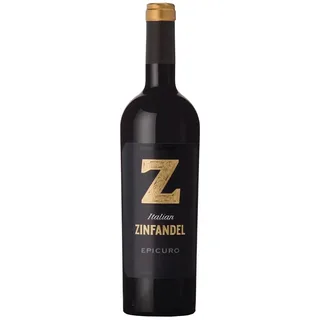Zinfandel is more than a grape, it’s a way of life. Whether you are an informal wine lover or a seasoned professional, Zinfandel has something different for everybody. From powerful spicy red wines to the sweet White Zinfandel, the fruitiness in this wine has captured the world’s hearts and glasses. Let’s get down to everything you should know about this iconic varietal.
What is Zinfandel?
The Zinfandel grape variety is known for its robust flavors and is very versatile. Its origin lies in Croatia, where it’s known as Crljenak Kaštelanski. However, today, Zinfandel is so strongly associated with California that people tend to forget that this variety is actually one of the oldest and most planted in the United States, with the nickname “America’s grape.”
What makes Zinfandel unique is its ability to adapt. It does very well in warm climates and can be produced into many different styles of wines, from robust reds to sweet rosés and even fortified wines.
Also Read: Nitrous Oxide Galaxy Gas
A Brief History of Zinfandel
- Origins in Croatian: The early history of this grape started as Tribidrag or Crljenak Kaštelanski in the country of Croatia.
- Italian Connection: The grape is also allied to Italy’s Primitivo, a variety grown in Puglia.
- It came to America in the early 1820s brought by immigrants: During the Gold Rush, it became a favorite in California because of its love for sunshine.
To date, California is the heart and soul of Zinfandel production, with Napa Valley, Sonoma County, and Lodi leading the way.
What Does Zinfandel Taste Like?
Zinfandel’s flavor profile depends on how it’s made and where it’s grown. Here’s what you can expect:
Red Zinfandel
Red Zinfandel is bold and complex, with flavors that often include:
- Blackberry
- Raspberry
- Cherry
- Plum
- Black pepper
- Tobacco
- Spice
This wine is typically medium to full-bodied with moderate tannins and a slightly smoky finish.
White Zinfandel
White Zinfandel, on the other hand, is light, sweet, and fruity. It’s a blush wine made by limiting the grape skin contact during fermentation. Flavors often include:
- Strawberry
- Watermelon
- Peach
- Citrus
White Zinfandel is a great choice for those new to wine or looking for a refreshing, easy-to-drink option.
Why Is Zinfandel So Popular?
- Versatility: From dry, bold reds to sweet rosés, Zinfandel appeals to a wide range of tastes.
- Food Pairing: Zinfandel’s flavor profile makes it a perfect partner for many dishes (more on that below).
- Rich History: Its American story adds a layer of charm, especially for those who love the idea of drinking a wine with roots in the Old World and a home in the New.
Zinfandel Food Pairing Guide
One of Zinfandel’s best qualities is its ability to pair beautifully with food. Whether you’re enjoying a barbecue or a light dessert, there’s a Zinfandel for the occasion.
Red Zinfandel Pairings
Red Zinfandel’s bold, spicy flavors make it a match for hearty dishes:
- Grilled meats: Think ribs, steaks, or lamb chops.
- Barbecue: The smoky, spicy notes of Zinfandel pair perfectly with saucy BBQ dishes.
- Spicy cuisine: Dishes like chili or tacos complement Zinfandel’s fruit-forward flavors.
- Italian dishes: Pasta with rich tomato sauce or pizza with spicy toppings works well.
White Zinfandel Pairings
White Zinfandel’s sweetness pairs best with lighter fare:
- Salads: Fresh greens with citrus-based dressings.
- Seafood: Shrimp, crab, or grilled fish.
- Creamy desserts: Cheesecake or panna cotta are delightful with this wine.
Also Read: iCryptoX
Zinfandel Wine Styles
- Old Vine Zinfandel: Grapes from vines over 50 years old create wines with concentrated flavors and complexity.
- Single Vineyard Zinfandel: Wines from a single vineyard highlight the unique terroir of that region.
- Fortified Zinfandel: A dessert wine version of Zinfandel, with higher alcohol and sweeter flavors.
Zinfandel Regions
While Zinfandel is grown worldwide, its true essence shines in California.
Top Regions in California
- Napa Valley: Known for elegant and refined Zinfandels with rich fruit flavors.
- Sonoma County: Produces balanced Zinfandels with a mix of fruit and spice.
- Lodi: Home to some of the oldest Zinfandel vines, producing bold and jammy wines.
- Paso Robles: Known for full-bodied Zinfandels with ripe fruit and high alcohol content.
How to Serve Zinfandel
Serving Zinfandel at the right temperature enhances its flavors:
- Red Zinfandel: Slightly cooler than room temperature, around 60–65°F (15–18°C).
- White Zinfandel: Best served chilled, around 45–50°F (7–10°C).
Use a large red wine glass for Red Zinfandel to allow the bold aromas to shine. For White Zinfandel, a standard white wine glass works perfectly.
Fun Facts About Zinfandel
- White Zinfandel Was a Happy Accident: It was first made in the 1970s when a winemaker tried to create a dry rosé but ended up with a sweeter wine.
- Zinfandel Vines Are Resilient: They can live for over 100 years, producing wines with incredible depth.
- It’s Not Just American: Zinfandel shares its DNA with Italy’s Primitivo and Croatia’s Tribidrag.
Conclusion
Zinfandel is a grape with character, history, and versatility. Whether you’re sipping on a bold Red Zinfandel with barbecue ribs or enjoying a chilled glass of White Zinfandel on a sunny day, this wine never fails to impress.
So, next time you’re shopping for wine, grab a bottle of Zinfandel and let its rich flavors transport you. Cheers to discovering (or rediscovering) this American classic! 🍷
Also Read: WWE SmackDown Episode 1491
FAQs About Zinfandel
1. Is Zinfandel sweet or dry?
Red Zinfandel is typically dry, while White Zinfandel is sweet.
2. What’s the alcohol content of Zinfandel?
Zinfandel wines often have higher alcohol levels, ranging from 14% to 17%.
3. How long can I age Zinfandel?
Most Zinfandels are best enjoyed young (within 5 years), but Old Vine Zinfandels can age for 10+ years.
4. What’s the difference between Zinfandel and Primitivo?
Zinfandel and Primitivo share the same genetic origins but are grown in different regions, leading to subtle flavor differences.
5. Can I cook with Zinfandel?
Absolutely! Red Zinfandel adds depth to sauces and marinades, while White Zinfandel works well in desserts.






3 thoughts on “Zinfandel Wine Guide: History, Taste, Pairings, and Fun Facts”